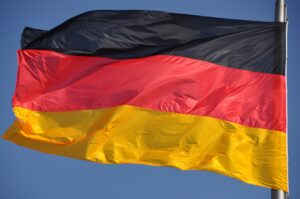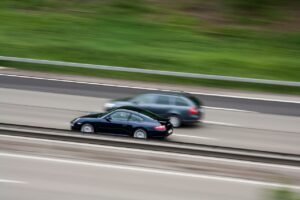The German education system is renowned globally for its rigorous approach and comprehensive structure, which contribute significantly to the country's economic success and cultural richness. From early childhood education to advanced higher education, the system is designed to provide a wide range of educational opportunities to meet the diverse … [Read more...]
Speed Limit Debates on the Autobahn: Perspectives and Proposals
The Autobahn is famous worldwide for its sections without speed limits, a hallmark that defines the essence of driving freedom in Germany. However, this characteristic also places it at the center of heated debates. This article delves into the discussions regarding speed limits on the Autobahn, presenting the various arguments and exploring … [Read more...]
Comparing the Autobahn to Other Major Highway Systems Worldwide
The Autobahn is renowned for its engineering and efficiency, but how does it compare to other major highway systems across the globe? This article provides a detailed comparison of the Autobahn with other significant highway networks, examining aspects like design, technology, and impact on national economies. The Autobahn vs. U.S. Interstate … [Read more...]
The Economic Impact of the Autobahn on German Commerce
The Autobahn is not just a marvel of engineering but also a critical economic asset for Germany. Spanning over 13,000 kilometers, it connects cities, industries, and markets, playing a vital role in the economic dynamics of the country and the wider European continent. Facilitating Trade and Mobility: Core Network for European Trade: The … [Read more...]
The Future of the Autobahn: Technological Advancements and Smart Roads
The Autobahn, a symbol of German engineering excellence, is poised to embrace the future with groundbreaking technologies. This article explores the technological advancements that are set to redefine the Autobahn, enhancing efficiency, safety, and sustainability. Technological Innovations: Smart Road Systems: The integration of IoT (Internet … [Read more...]
Touring Germany via the Autobahn: Must-See Stops and Scenic Routes.
The Autobahn is not just a fast track from point A to B; it’s a gateway to some of Germany’s most iconic sights and hidden gems. From breathtaking natural landscapes to cities steeped in history, this article guides you through the ultimate road trip adventure along the Autobahn. Planning Your Route: Map Your Journey: Start with a map of the … [Read more...]
Eco-Friendly Initiatives on the Autobahn
The Autobahn is not only a symbol of German engineering prowess but also a leader in environmental stewardship within the infrastructure sector. This article delves into the various eco-friendly initiatives integrated into the Autobahn system, demonstrating Germany's commitment to sustainable development. Sustainable Construction … [Read more...]
Engineering the Autobahn: Innovations in Highway Construction
The Autobahn is renowned not only for its expansive network and high-speed limits but also for its exceptional engineering. This article examines the cutting-edge construction techniques and materials that contribute to the durability and safety of the Autobahn, highlighting how these innovations have set standards in highway engineering … [Read more...]
The History of the Autobahn: From Bismarck to the Bundesautobahn
The Autobahn is not just a network of highways but a historical artifact that reflects Germany’s past from the industrial age to modern times. This article traces the evolution of the Autobahn, debunking common myths about its origins and highlighting key historical milestones that contributed to its current status as an icon of automotive freedom … [Read more...]
The Autobahn: Facts and Myths of Germany’s High-Speed Highways
The Autobahn stands as an emblem of German engineering prowess and efficiency, famous worldwide for sections without speed limits and a reputation for safety and precision. However, numerous myths surround this extensive network. This article seeks to clarify these myths, presenting a clear view of the Autobahn's real character and its impact on … [Read more...]
- 1
- 2
- 3
- …
- 118
- Next Page »









